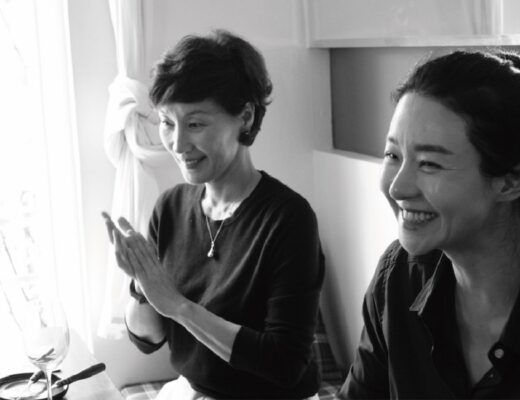The Journey to the West was perhaps the defining story of Chinese language film in the 2010s. Like stories of the Shaolin Temple or folk hero Wong Fei-hung in previous decades, it inspired myriad adaptations and interpretations, from filmmakers with wildly different styles and approaches: Stephen Chow and Tsui Hark’s subversive but ultimately faithful adaptations; Soi Cheang’s increasingly complex effects extravaganzas; Derek Kwok’s stab at a gritty Monkey King reboot; and more. The most unique though was Tsai Ming-liang’s extension of his Walker series of short films, with Lee Kang-sheng as the Monk who walks very slowly (now recognized as Xuanzang, or Tripitaka, the Buddhist monk whose real-life trip from China to India during the height of the Tang Dynasty provided the inspiration for the Journey to the West stories) and French actor Denis Lavant as the Monkey King.
The film begins with an eight-minute-long extreme closeup of Lavant’s face. The Monkey King has been trapped under a mountain for five hundred years, his punishment for wreaking havoc in Heaven and defying the will of the all-powerful Jade Emperor. The duration of the static shot gives us a taste of the boredom he must have endured, while subsequent shots imply his location under the mountain and in fact imply a connection between the two: his face has become the mountain, and vice versa. We then follow the Monk on his journey to free the Monkey King: up a staircase, across a stone path bordered by a waterway that seems to disappear into the sky (the monk’s fiery red robes completing the elemental image), and down a long staircase into the underworld. Briefer shots find the monk in glass: either reflected in mirrors or popping up unexpectedly in windows as he passes in-between our world and another, between image and substance, between truth and falsity. Eventually the Monkey King joins him, and the two continue their journey.
Briefer shots find the monk in glass: either reflected in mirrors or popping up unexpectedly in windows as he passes in-between our world and another, between image and substance, between truth and falsity.
A typical filmic approach to a long journey uses editing and a quickly changing mise-en-scène to give the illusion of distance travelled (like Forrest Gump jogging back and forth across America to classic pop tunes). For Tsai’s Journey, he does the opposite, presenting a series of static shots (almost never does his camera move) which the actors cross in extreme slow motion while everything around them proceeds as normal. Like an ant undertaking an epic quest to cross a kitchen floor, so do our heroes bend our sense of time and space: seconds become miles; steps become years.
The film closes with a postscript, hand-written by Lang Kang-sheng, taken from the Diamond Sutra, one of the scriptures the real Xuanzang brought back from India. It reads:
All composed things are like a dream,
A phantom, a drop of dew, or a flash of lightning,
That is how to meditate on them,
That is how to observe them.
The extreme slowness of the monk’s movements, coupled with the duration and stillness of Tsai’s shots, forces the viewer into this kind of meditative, observational mode. We have nothing to do but contemplate the images, to observe them and everything in them not just for what they are, but for what a dream of them might be. A rock could be a monkey, a mirror a whole universe.







